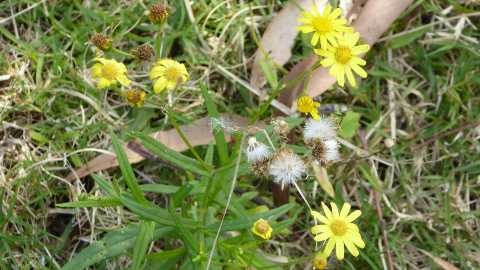Weed control and identification

All residents have a general biosecurity obligation to control weeds on their land. This is under Queensland’s Biosecurity Act 2014.
Join the battle against these invasive plants. Learn to identify weed species and manage weeds on your property.
Reporting weeds on Council land
Council manages weeds on Council properties, reserves and waterways across Moreton Bay. If you identify any weed species on Council land, report them to Council.
Identifying weeds in Moreton Bay
Each invasive plant species is classed as high-risk, medium-risk, low-risk or non-restricted. Each risk level has different steps to follow if found on your property.
In Council's Biosecurity Plan 2025-2030(PDF, 3MB), the following weeds are allocated a management intent category:
- high-risk: eradication or working towards eradication
- medium-risk: containment
- low-risk: asset protection, targeted or localised.
High-risk
High-risk weeds, such as Siam weed, Peruvian primrose, cha-om and parthenium, are not commonly present in Moreton Bay. They are a serious risk to primary industries, the natural environment, livestock and human health. By law, you must keep your land free of high-risk weeds. You must report any suspected sightings to the Department of Agriculture and Fisheries.
Medium-risk
Medium-risk weeds include sagittaria, water hyacinth and fireweed. You must control medium-risk weeds on your property.
Low-risk
You must control low-risk weeds if your property is next to an environmentally significant area. Some examples of low-risk weeds are lantana, camphor laurel and Madeira vine.
Non-restricted
Non-restricted invasive weeds are not subject to legislation or restrictions. Landowners should still control non-declared weeds on their property to reduce their impact on communities and ecosystems.
You must not introduce, supply, release or sell any invasive weed plants without a permit. Penalties apply.
View our guides for weeds in each risk class found in Moreton Bay to help you identify weeds by photo.